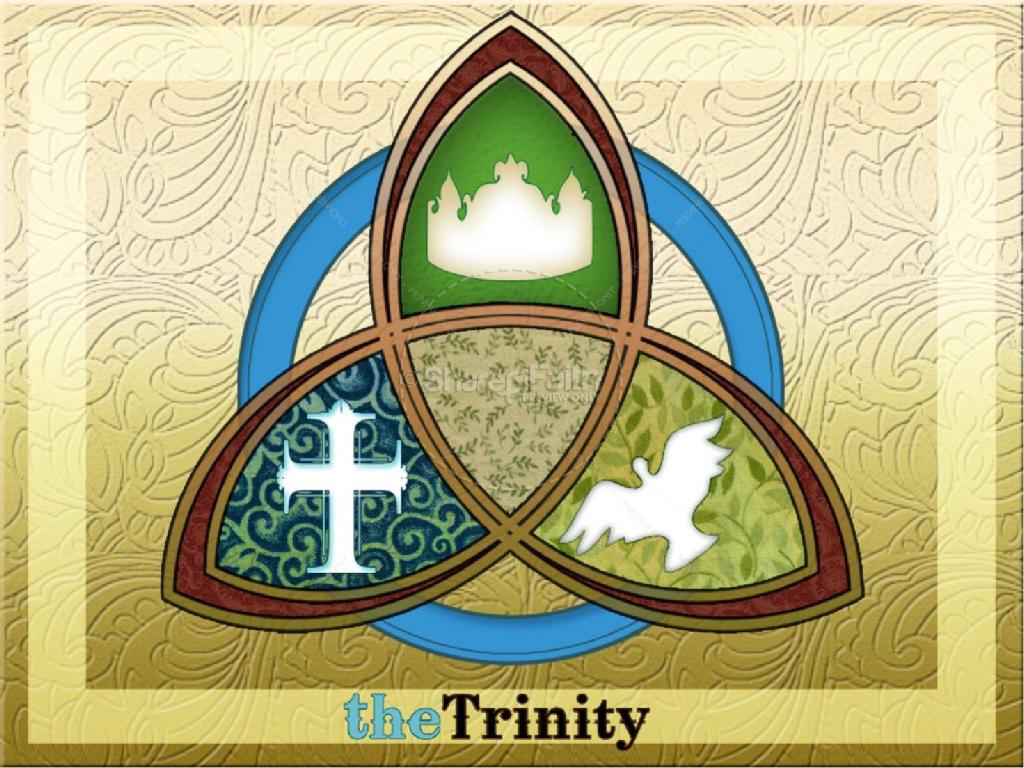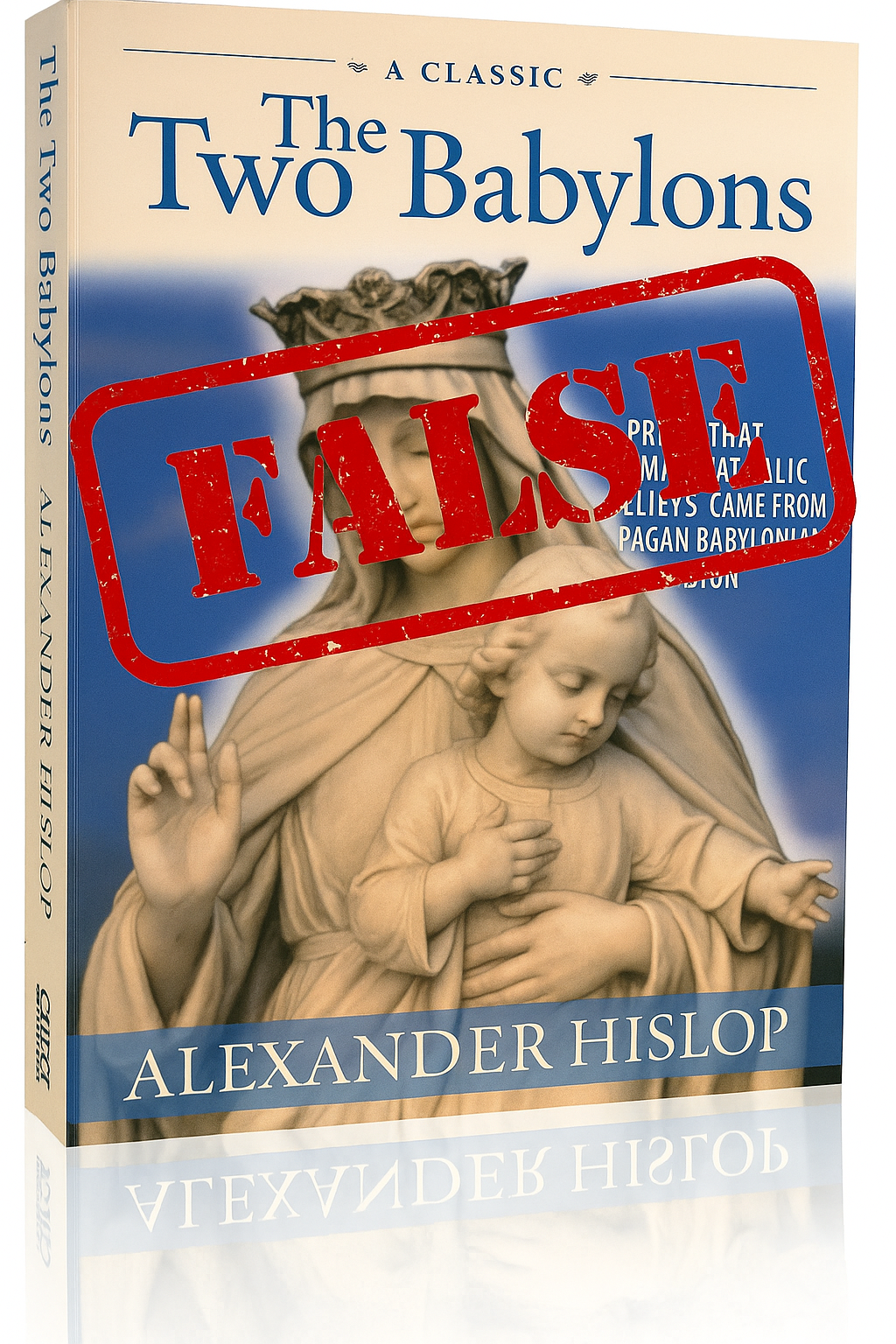The Coming of Jesus: Daniel's 70 Weeks

Series Index
- The Coming of Jesus: Introduction
- The Coming of Jesus: Daniel's 70 Weeks
- The Coming of Jesus: Coming on the clouds
- The Coming of Jesus: The Olivet Discourse – Part 1
- The Coming of Jesus: The Olivet Discourse – Part 2
- The Coming of Jesus: Revelation Fulfilled?
- The Coming of Jesus: Our Future Hope - What Now?
Daniel's 70 Weeks
To fully understand Jesus's first, and indeed what is commonly called his "Second Coming," we need to understand the book of Daniel. This prophetic books give many details and glimpses into the future about coming kingdoms, rulers and above all, the Messiah. I'm going to be focussing on just one part of the book, chapter nine, often referred to as "Daniel's 70 Weeks". But just what is "Daniel's 70 Weeks" you might be asking as you read this. For those unfamiliar with Old Testament prophecy, it is a prophetic vision that Daniel was given from God, and interpreted by the angel Gabriel. You can read the prophecy in full below:
Dan 9: 20-27 (NRSV)
While I was speaking, and was praying and confessing my sin and the sin of my people Israel, and presenting my supplication before the Lord my God on behalf of the holy mountain of my God— while I was speaking in prayer, the man Gabriel, whom I had seen before in a vision, came to me in swift flight at the time of the evening sacrifice. He came and said to me, “Daniel, I have now come out to give you wisdom and understanding. At the beginning of your supplications a word went out, and I have come to declare it, for you are greatly beloved. So consider the word and understand the vision:
“Seventy weeks are decreed for your people and your holy city: to finish the transgression, to put an end to sin, and to atone for iniquity, to bring in everlasting righteousness, to seal both vision and prophet, and to anoint a most holy place. Know therefore and understand: from the time that the word went out to restore and rebuild Jerusalem until the time of an anointed prince, there shall be seven weeks; and for sixty-two weeks it shall be built again with streets and moat, but in a troubled time. After the sixty-two weeks, an anointed one shall be cut off and shall have nothing, and the troops of the prince who is to come shall destroy the city and the sanctuary. Its end shall come with a flood, and to the end there shall be war. Desolations are decreed. He shall make a strong covenant with many for one week, and for half of the week he shall make sacrifice and offering cease; and in their place shall be an abomination that desolates, until the decreed end is poured out upon the desolator.”
Now, in this prophecy, it speaks of "weeks" (or literally, "sevens") – 70 in total, which if taken at face value would only be just over a year in length. This would be a very short time to do all that is spoken of by the angel — especially the rebuilding of a city!
The prophecy in Daniel gave the time span for the rebuilding of the city and even mentions that it will be in a "troubled time" as Gabriel told Daniel, which we can see happen in the book of Nehemiah in about 444 BC (around 94 years later):
Nehemiah 4:7-8
But when Sanballat and Tobiah and the Arabs and the Ammonites and the Ashdodites heard that the repairing of the walls of Jerusalem was going forward and the gaps were beginning to be closed, they were very angry, and all plotted together to come and fight against Jerusalem and to cause confusion in it. (cf. Neh 4:16-18; Ezra 3:3)
The is a prophetic metaphor for years – each day equals one year. You may wonder how the "sevens" or "week" equals 7 years, and by looking at other examples of prophetic language in the Bible, we can find two other places where one day is equal to one year in a prophetic sense: Ez 4:6 and Num 14:34. There's also two other places where one day is equalled with one thousand years: Ps 90:4 and 2 Pet 3:8 – unlike the previous examples, these aren't spoken of in a prophecy or vision as to have a specific time meaning, but are rather hyperbole to make a point, as the surrounding context of those verses will show.
If we were to calculate Daniel's prophecy based on 1000 years to each day, it would cover a timeframe of 70,000 years instead of 490 – which is just slightly ridiculous!
So lets break down the prophecy to see what's going on and being said:
"Seventy weeks are decreed for your people and your holy city" — 70 weeks, or 490 years (70x7), have been decreed by God as the time set for the following things to take place for the Jews and Jerusalem. These things can be split up into six parts:
- To finish the transgression
- To put an end to sin
- To atone for iniquity
- To bring in everlasting righteousness
- To seal both vision and prophet
- To anoint a most holy place (Heb. or "thing" or "one").
The angel Gabriel then gives a brief overview of how all of these things will happen, when the seventy week countdown begins, and the timescale for each part. The nation of Israel were basically on probation from God to get their act together; they have 490 years to get right with God, which is point 1. Then follows points 2-6. This prophecy is actually very precise and specific!
...from the time that the word went out to restore and rebuild Jerusalem until the time of an anointed prince, there shall be seven weeks; and for sixty-two weeks it shall be built again with streets and moat, but in a troubled time. After the sixty-two weeks, an anointed one shall be cut off and shall have nothing, and the troops of the prince who is to come shall destroy the city and the sanctuary.
I'm going to include this same quote from the NIV translation too (all other quotes are NRSV), as it keeps the original wording of "sevens" instead of using "weeks", which I find makes the grammar of the sentence flow a little better:
From the time the word goes out to restore and rebuild Jerusalem until the Anointed One, the ruler, comes, there will be seven ‘sevens,’ and sixty-two ‘sevens.’ It will be rebuilt with streets and a trench, but in times of trouble.
This in total means that there are to be 483 years from when the word "goes out" to start restoration on Jerusalem. I point this out because of the way the English translations make the initial seven and the sixty-two sevens appear as separate events, as in the NRSV ("there shall be seven weeks; and for sixty-two weeks...") whereas the NIV quote doesn't come across that way, and neither does it in some other versions, such as the KJV. I looked this up in a Hebrew interlinear (since I can't read ancient Hebrew) and the flow of the sentence is more akin to the NIV, KJV etc., with a Sof passuk (ie. a full stop/period) marking the end of the sentence at the end of verse 25. But I'm not a Hebrew expert so I may be overlooking other aspects of grammar here.
What has this got to do with Jesus?
Now you may be asking, what has all this got to do with the "Second Coming?" Well, in order to fully understand when the return and "the end" is to take place, we must first understand the timing of Daniel's prophecy about the Messiah as his first coming and death, and then what's oftern thought to be his return are all wrapped up in this 70 weeks.
"From the time the word went out" is often related to King Cyrus, who gave the initial decree that allowed the Jews to return to Jerusalem to begin rebuilding their temple (cf. 2 Chron. 36:23; Ezra 1:2-5). This is assumed because Cyrus was prophesied about by Isaiah 150-200 years before he was born. The amazing thing about this prophecy is that Isaiah actually named Cyrus and that he would do this! Check it out:
Isaiah 44:28
...who says of Cyrus, “He is my shepherd,
and he shall carry out all my purpose”;
and who says of Jerusalem, “It shall be rebuilt,”
and of the temple, “Your foundation shall be laid.”
But what is often overlooked in this is that Cyrus only gives a decree to rebuild the temple. We see this fulfilled in Ezra 3:8-13 which tells of when the foundations were laid after the Jews returned to Jerusalem following Cyrus's decree. Josephus, a first century Jewish historian, gives a nice little insight into this aspect of Jewish history (Antiquities 11:1,2) when he recounts that King Cyrus didn't realise this was written but when it was shown to him, he then had a desire to go about and fulfil it - despite being a Persian king who didn't even know nor worship the God of the Jews (Isa 45:5)!
So when did the seventy week clock begin ticking, if not with Cyrus? There are four decrees by three kings to the Jews concerning the rebuilding of the temple and the city, over a period of time: Cyrus, Darius and Artaxerxes (twice, although there is some dispute over whether there was a second king with the same name later on).
But is it the decree of Artaxerxes (Ezra 7:11-26) in which the Jewish people were allowed to go back to Jerusalem with the blessing of the king, so that they may restore it fully. This happened in the 7th year of his reign (Ezra 7:8), which according to historical records, would have been 457 BC.
As a point of interest, there is another way in which these initial 7 weeks and 62 weeks can be read which could also explain why the "weeks" are phrased in two parts ("until the time of an anointed prince, there shall be seven weeks; and for sixty-two weeks..."). This first anointed price could well reference Cyrus (as "anointed" doesn't always mean the Messiah in the Saviour sense), and the "word" that went out could be a reference to Jeremiah's prophecy about the Babylonian captivity (which is during the time that Daniel was written). Jeremiah prophesied about Jerusalem about 587 BC, which would in fact be 49 years before Cyrus gave his decree, around 538 BC. The break in the time, and then continuing with "and for sixty-two weeks it shall be built..." would still begin when the rebuilding actually took place, in the reign of Artaxerxes, still leading us up until the time of Jesus.
Linking into the New Testament
It is generally accepted that Jesus was baptised around 26 or 27 AD, given the timescales and points in history the authors of Scripture give us (eg. Luke 3:1). This now brings us from "the time that the word went out to restore and rebuild Jerusalem" right up until "after the sixty-two weeks" when the next "anointed one" appears in the prophecy, as when Jesus was baptised it was then he was anointed by the Holy Spirit to begin his ministry (Matt 3:16-17; Acts 10:38). As an aside for those reading who may not realise the connection: Messiah is the Hebrew word for "anointed," and Christ is the Greek version of that Hebrew word – hence Jesus Christ, or Jesus the Messiah (although, not all who were anointed were thought or expected to be the promised Saviour-Messiah).
This timescale brings us perfectly up to the 69 "weeks" of Daniel's prophecy, which is 483 years leaving only the remaining "week" to go.
There is a 'pause' here, similar to the first 7 weeks, in the way the angel Gabriel phrases the prophecy to Daniel in verse 26: "After the sixty-two weeks, an anointed one shall be cut off and shall have nothing" – so the initial 483 years brings us up to the next appearance of the Anointed One, and then after this he shall be "cut off", ie. killed. Jesus was crucified after about 3 years of ministry.
Before getting into that last 7 year period, I'd just like to point out some aspects of the Gospels and Galatians which should hopefully make more sense now in light of Daniel's prophecy and its timing:
Gal 4:4 But when the fullness of time had come, God sent his Son, born of a woman, born under the law... (emphasis mine)
Mark 1:14-15 Now after John was arrested, Jesus came to Galilee, proclaiming the good news of God, and saying, “The time is fulfilled, and the kingdom of God has come near; repent, and believe in the good news.” (emphasis mine)
Jesus began his ministry at that time because it was when the "time [was] fulfilled", referencing Daniel's prophecy (which would also "seal both vision and prophet" about this event; v.24) , which his original audience would have understood. The Jewish people had that time while Jesus was with them to repent and turn back to God and enter his eternal kingdom which was promised to the Messiah – the kingdom which Daniel also prophesied about in Daniel chapter two, that would be founded not by human hands, and which would last forever. That was the time which God had given his people, and those who rejected it would suffer what was prophesied about in the final "week".
Dan 2:44
And in the days of those kings the God of heaven will set up a kingdom that shall never be destroyed, nor shall this kingdom be left to another people. It shall crush all these kingdoms and bring them to an end, and it shall stand forever
2 Peter 1:11
For in this way, entry into the eternal kingdom of our Lord and Savior Jesus Christ will be richly provided for you
Jn 18:36
Jesus answered, “My kingdom is not from this world. If my kingdom were from this world, my followers would be fighting to keep me from being handed over to the Jews. But as it is, my kingdom is not from here.
The Final Week
There is some contention about this final seven years. The details about what happens during that time are divided in half: a ruler will come to destroy for the first half (3.5 years), and then war will ensue until the end, which will also be this ruler's end too when the final 3.5 years are complete.
Some say that it is still yet to come, in some far-flung future, as the "prophetic clock" stopped when Jesus was killed. I suspect if you've ever been taught anything about the "End Times," that is what you believe or expect, especially if you have read or watched the Left Behind books or films which are based heavily on a futurist interpretation of Daniel, Revelation and the Olivet Discourse.
But it may surprise you to know that this isn't the only interpretation or school of thought, despite how popular this view is. I used to believe that this was what was going to happen, that it could happen at any moment as "Jesus is coming soon!" along with great tribulation and "armageddon" as people often proclaim. But after studying this topic for quite some time now, I've found that it doesn't reconcile with what the Scriptures say, or what Jesus taught, nor what history shows, and thus have had to adjust my views.
Lets have a look at what is to happen in the final seven years:
Dan 9:26-27
After the sixty-two weeks, an anointed one shall be cut off and shall have nothing, and the troops of the prince who is to come shall destroy the city and the sanctuary. Its end shall come with a flood, and to the end there shall be war. Desolations are decreed. He shall make a strong covenant with many for one week, and for half of the week he shall make sacrifice and offering cease; and in their place shall be an abomination that desolates, until the decreed end is poured out upon the desolator.
Now some say that since Jesus' ministry was about 3 and a half years long, that this was the final week and why the sacrifices were ceased. On the face of it this seems to make sense, as the sacrificial death of Jesus was the be the final sacrifice for sins for all time in the eyes of God, thus any other animal sacrifices aren't accepted. While Jesus's death did fulfil other aspects of this prophecy: "an anointed one shall be cut off ... to put an end to sin, and to atone for iniquity, to bring in everlasting righteousness" which the New Testament authors were clearly aware of and saw fulfilled in Jesus, I won't write them all out here but will give references – John 1:29; 1 Cor 1:30; 2 Cor 5:17-19,21; Romans 3:21-22 ; Romans 5:17-19; Heb 13:12; Heb 9:15; 1 Peter 2:24; Col 1:20, plus many more.
I will quote one passage though, which I think summarises the fulfillment of Jesus in Daniel's prophecy:
Heb 9:26b-25
But as it is, he has appeared once for all at the end of the age to remove sin by the sacrifice of himself.
Not only does this state that the early Christians saw Jesus as being the ultimate sacrifice to remove sins for all time, and give those who believe in him everlasting righteousness, but that they also recognised the times as being "the end of the age". I will be going more into that topic later in this series.
So while I do see a fulfillment here in part, and agree with the New Testament authors that Jesus's sacrifice did put an end to the need for animal sin sacrifices, however I don't believe that this is what Dan 9:26-27 is all about, as the Jews will have continued to sacrifice in the temple as they always did, even after Jesus's death.
No, this part is also what Jesus prophesied about in Matt 24:15 "So when you see the desolating sacrilege standing in the holy place, as was spoken of by the prophet Daniel" and also in verse 30, "they will see ‘the Son of Man coming on the clouds of heaven’" which is also a reference to the book of Daniel chapter seven: "As I watched in the night visions, I saw one like a son of man coming with the clouds of heaven."
Here, Jesus also says that the temple will be destroyed too, which is what this final week in Daniel is also saying: "the prince ... shall destroy the city and the sanctuary" – contrast this with Matt 24:1-2.
Some reading this now may be thinking of something else Jesus said, "But about that day and hour no one knows" — this can still be true despite the preciseness of Daniel's prophecy, simply because the 70 weeks appear to have some time breaks which leave it open to happen only when certain events are in play – by which point the signs of what's coming will be obvious yet still not definite.
"After the sixty-two weeks ... the troops of the prince who is to come shall destroy the city..." – there's an indefinite period of time here, which is why Jesus told his disciples, "when you see all these things, you know that he is near..."
I'll be discussing Matthew 24-25 in more detail in Part 3 of this series; the next part will be looking at what exactly "coming on the clouds of heaven" means in terms of it's usage in the Old Testament prophetic texts, and how the disciples and those listening to Jesus would have understood it, as all these phrases link the New to the Old Testament. As 1st century Jews who knew their Scriptures, they would have undoubtedly have heard it differently to how we do in a 21st century context with all of our "End Times" baggage and bias.
Feel free to leave a comment below and share your thoughts!
Further reading:
- http://www.biblicalstudies.com/bstudy/eschatology/daniel.htm
- http://www.daniels70weeks.com/
- http://www.patmospapers.com/daniel.htm
- http://biblehub.com/timeline/ezra/1.htm
- http://biblehub.com/timeline/nehemiah/1.htm
- http://www.scripture4all.org/OnlineInterlinear/OTpdf/dan9.pdf
- http://www.ccel.org/j/josephus/works/ant-11.htm
- http://www.tedmontgomery.com/bblovrvw/C_11b.html
- http://cicministry.org/commentary/issue5.htm
- http://jesusprophecies.wordpress.com/2011/03/07/to-bring-in-everlasting-righteousness/
- http://www.quodlibet.net/articles/hall-sacrifice.shtml
Leave a comment Like Back to Top Seen 2.7K times Liked 2 times
Enjoying this content?
Support my work by becoming a patron on Patreon!
By joining, you help fund the time, research, and effort that goes into creating this content — and you’ll also get access to exclusive perks and updates.
Even a small amount per month makes a real difference. Thank you for your support!
Subscribe to Updates
If you enjoyed this, why not subscribe to free email updates and join over 853 subscribers today!
My new book is out now! Order today wherever you get books
Recent Posts
Luke J. Wilson | 8 days ago | Islam
You are not alone. Around the world, many Muslims — people who already believe in one God, pray, and seek to live righteously — are drawn to know more about Jesus (ʿĪsā in Arabic). Some have heard He is more than a prophet. Some have sensed His presence in a dream or vision. And some simply long to know God more deeply, personally, and truly. So what does it mean to become a Christian? And how can you take that step? This guide is for you. 1. What Christians Believe About God and Jesus ➤ One God, Eternal and Good Christians believe in one God — the same Creator known to Abraham, Moses, and the prophets. But we also believe God is more personal and relational than many realise. In His love, He has revealed Himself as Father, Son (Jesus), and Holy Spirit — not three gods, but one God in three persons. ➤ Jesus Is More Than a Prophet Muslims honour Jesus as a great prophet, born of the virgin Mary. Christians also affirm this — but go further. The Bible teaches that Jesus is the Word of God (Kalimat Allāh), who became flesh to live among us. He performed miracles, healed the sick, raised the dead — and lived without sin.Jesus came not just to teach but to save — to bring us back to God by bearing our sins and rising again in victory over death. 2. Why Do We Need Saving? ➤ The Problem: Sin All people — no matter their religion — struggle with sin. We lie, get angry, feel jealous, act selfishly, or fail to love God fully. The Bible says: “All have sinned and fall short of the glory of God.” (Romans 3:23) Sin separates us from God. And no matter how many good deeds we do, we can never make ourselves perfect or holy before Him. ➤ The Solution: Jesus Because God loves us, He did not leave us in our sin. He sent Jesus, His eternal Word, to live as one of us. Jesus died willingly, offering His life as a sacrifice for our sins, then rose again on the third day. “But God proves his love for us in that while we still were sinners Christ died for us.” (Romans 5:8) 3. How Do I Become a Christian? Becoming a Christian is not about joining a Western religion. It’s about entering a relationship with God through faith in Jesus Christ. Here is what the Bible says: ✝️ 1. Believe in Jesus Believe that Jesus is the Son of God, that He died for your sins, and that He rose again. “If you confess with your lips that Jesus is Lord and believe in your heart that God raised him from the dead, you will be saved.” (Romans 10:9) 💔 2. Repent of Your Sins Turn away from sin and ask God to forgive you. This is called repentance. It means being truly sorry and choosing a new way. “Repent therefore, and turn to God so that your sins may be wiped out.” (Acts 3:19) 💧 3. Be Baptised Jesus commands His followers to be baptised in water as a sign of their new life. Baptism represents washing away your old life and rising into a new one with Jesus. “Repent and be baptised every one of you in the name of Jesus Christ so that your sins may be forgiven.” (Acts 2:38) 🕊️ 4. Receive the Holy Spirit When you believe in Jesus, God gives you the Holy Spirit to live within you, guiding you, comforting you, and helping you follow His will. “You received the Spirit of adoption, by whom we cry, ‘Abba! Father!’” (Romans 8:15) 🧎 5. Begin a New Life As a Christian, you are born again — spiritually renewed. You begin to grow in faith, love, and holiness. You read the Bible, pray, fast, and gather with other believers. Your life is no longer your own; you now live for God. 4. What Does a Christian Life Look Like? Jesus said: “If anyone wants to become my followers, let them deny themselves and take up their cross and follow me.” (Matthew 16:24) This means: Loving God with all your heart Loving your neighbour — even your enemies Forgiving others ...
Luke J. Wilson | 05th May 2025 | Politics
When we think about David and Saul, we often focus on David’s rise to kingship or his battle with Goliath. But hidden within that story is a deep lesson for today’s generation about leadership, resistance, and the power of revolutionary love. At a recent youth training event (thanks to South West Youth Ministries), I was asked how I would present the story of David and Saul to a Christian teenage youth group. My mind turned to the politics of their relationship, and how David accepted Saul’s leadership, even when Saul had gone badly astray. David recognised that Saul was still God’s anointed king — placed there by God Himself — and that it was not David’s place to violently remove him. Gen-Z are more politically aware and engaged than previous generations, and are growing up in a world where politics, leadership, and social issues seem impossible to escape. We live in a world where political leaders — whether Trump, Putin, Starmer, or others — are often seen as examples of failed leadership. It’s easy to slip into bitterness, cynicism, or violent rhetoric. These kids are immersed in a culture of activism and outrage. As Christians, we’re called to care deeply about truth and justice and approach leadership differently from the world around us (Hosea 6:6; Isaiah 1:17; Micah 6:8). The story of David and Saul offers pertinent lessons for our modern lives. Respect Without Endorsement David’s respect for Saul was not blind loyalty. He did not agree with Saul’s actions, nor did he ignore Saul’s evil. David fled from Saul’s violence; he challenged Saul’s paranoia; he even cut the corner of Saul’s robe to prove he had the chance to kill him but chose not to. Yet throughout, David refused to take matters into his own hands by force. Why? Because David understood that even flawed authority ultimately rested in God’s hands, he trusted that God would remove Saul at the right time. This is echoed later in the New Testament when Paul writes in Romans 13 that “there is no authority except from God, and those authorities that exist have been instituted by God”, something even Jesus reminded Pilate of during his trial (John 19:10–11). In other words, even flawed leadership can be part of God’s bigger plan, whether for blessing or discipline. Even when leaders go bad, our call as believers is to maintain integrity, respect the position, and resist evil through righteousness — not rebellion. David and Saul: A Lesson in Respect and Restraint Saul was Israel’s first king — anointed by God but later corrupted by pride, fear, and violence. David, chosen to succeed him, spent years running for his life from Saul’s jealous rage. One day, David found Saul alone and vulnerable in a cave. His men urged him to strike Saul down and end the conflict. But David refused: “I will not raise my hand against my lord; for he is the Lord’s anointed.” (1 Samuel 24:10) Instead of killing Saul, David cut off a piece of his robe to prove he could have harmed him, but didn’t. In doing so, he demonstrated a real form of nonviolent resistance. He stood firm against Saul’s injustice without resorting to injustice himself, and acted in a way that could try to humble Saul instead. Peacemaking Is Not Passivity There is a modern misconception that peacemaking means doing nothing and just letting injustice roll all over us. But true biblical peacemaking is not passive; it actively resists evil without becoming evil. Interestingly, David’s actions toward Saul also foreshadow the type of nonviolent resistance Jesus later taught. When Jesus commanded His followers to turn the other cheek, go the extra mile, and love their enemies, he was not calling for passive submission but offering what scholar Walter Wink describes as a “third way” — a bold, peaceful form of resistance that uses what he calls “moral jiu-jitsu” to expose injustice without resorting to violenc...
Luke J. Wilson | 21st April 2025 | Easter
Over the years, I’ve encountered many Christians who’ve quoted from Alexander Hislop’s The Two Babylons as if it were a solid historical resource. The book claims that the Roman Catholic Church is not truly Christian but rather a continuation of ancient Babylonian religion. It’s self-assured and sweeping, and for many people, it seems to explain everything, from Marian devotion to Lent and Easter, to Christmas, as rooted in paganism. But is it accurate? In short: no, it really isn’t. Hislop’s work is a classic example of 19th-century pseudohistory — a polemical piece, written to prove a point, not to explore any historical truth. Flawed Methods and Wild Claims Hislop argues that most Catholic practices — from the Mass and clerical robes to festivals like Christmas and Easter — were somehow borrowed from Babylonian religion. The problem being that Hislop doesn’t rely on primary sources or credible historical data. Instead, he draws connections based on word similarities (like Easter and Ishtar) or visual resemblances (like Mary and child compared with mother-goddess statues from ancient cultures). But phonetic resemblance isn’t evidence, and neither is visual similarity. For example, if I say “sun” and “son” in English, they may sound alike, but they aren’t the same thing. That’s the level of reasoning at work in much of The Two Babylons. Hislop often lumps together completely different ancient figures — Isis, Semiramis, Ishtar, Aphrodite — as if they were all just variations of the same deity. He then tries to say Mary is just the Christian version of this pagan goddess figure. But there’s no credible evidence for that at all. Mary is understood through the lens of Scripture and Christian theology, not through pagan myth. The earliest depictions of Mary and the Christ-child date back to the second century and do not resemble any of the pagan idols. But, again, the common accusations are based on superficial similarities of a woman nursing a child. That’s going to look the same no matter who or what does that! Oldest depiction of Mary. Dura-Europos Church, Syria, 2nd century What About Lent and Tammuz? One of Hislop’s more popular claims is that Lent comes from a Babylonian mourning ritual for the god Tammuz, mentioned in Ezekiel 8:14. He argues that early Christians borrowed the 40-day mourning period and just rebranded it. But this doesn’t line up with the evidence. Lent developed as a time of fasting and repentance leading up to Easter — especially for new believers preparing for baptism. The number forty comes from Scripture: Jesus’ forty days in the wilderness, Moses’ fast on Sinai, and Elijah’s journey to Horeb. Church Fathers like Irenaeus and Athanasius saw it as a time for self-denial and spiritual renewal — not mourning a pagan god. Yes, there are pagan festivals that involve seasonal death and rebirth stories. But similarity does not mean origin. If that logic held, then even Jesus’ resurrection would be suspect because pagan cultures also told resurrection-like stories. Yet the gospel stands apart — not because of myth but because of history and revelation. Why Hislop’s Work Persists Even though The Two Babylons is poor scholarship, it’s unfortunately had a long shelf life. That’s partly because it appeals to a certain kind of suspicion. If you’re already sceptical about the Catholic Church, Hislop offers an easy explanation: “It’s all pagan!”. But history isn’t ever that simple. And theology — especially the theology handed down through the ages by the faithful— isn’t built on conspiracy and apparent obscure connections, but on Christ and the truth of the Scriptures. Interestingly, even Ralph Woodrow, a minister who once wrote a book defending Hislop’s ideas, later retracted his views after digging deeper into the evidence. He eventually wrote a book called The Babylon Connect...
Darwin to Jesus | 16th April 2025 | Atheism
Guest post by Darwin to Jesus Dostoevsky famously said, “If there is no God, then everything is permitted.” For years, as an atheist, I couldn’t understand what he meant, but now I do… Here’s a simple analogy that shows why only theism can make sense of morality: Imagine you just got hired at a company. You show up, set up your desk, and decide to use two large monitors. No big deal, right? But then some random guy walks up to you and says: “Hey, you’re not allowed to do that.” You ask, “What do you mean?” They say, “You’re not permitted* to use monitors that big.” In this situation, the correct response would be: “Says who?” We’ll now explore the different kinds of answers you might hear — each one representing a popular moral theory without God — and why none of them actually work. Subjective Morality The random guy says, “Well, I personally just happen to not like big monitors. I find them annoying.” Notice that’s not a reason for you to change your setup. Their personal preferences don’t impose obligations on you. This is what subjective morality looks like. It reduces morality to private taste. If this were the answer, you’d be correct to ignore this person and get back to work — big monitors are still permitted. Cultural Relativism Instead, they say, “It’s not just me — most people here don’t use big monitors. It’s not our culture.” That’s cultural relativism: right and wrong are just social customs, what is normal behavior. But notice customs aren’t obligations. If the culture were different, the moral rule would be different, which means it isn’t really moral at all. You might not fit in. You might not be liked. But you’re still permitted to use big monitors. Emotivism Here after being asked “says who?” the person just blurts out, “Boo, big monitors!” You reply, “Hurrah, big monitors!” That’s the entire conversation. This is emotivism. On this moral theory when we talk about right and wrong we’re actually just expressing our personal feelings towards actions, I boo rape, you hurrah rape. But shouting “boo!” at someone doesn’t create real obligations. You’re still permitted to use large monitors. Utilitarianism Here, the person says, “Your big monitors lower the overall productivity of the office. You’re not permitted to use them because they lead to worse consequences.” This is utilitarianism: morality is based on producing the greatest happiness for the greatest number. But even if that’s true — so what? Who says you’re obligated to maximize group productivity? And what if your monitors actually help you work better? Utilitarianism might tell you what leads to better outcomes, but it doesn’t tell you why you’re morally obligated to follow that path — especially if it comes at your own expense. You’re still permitted to use large monitors. Virtue Ethics Here they say, “Using big monitors just doesn’t reflect the virtues we admire here — simplicity, humility, restraint.” This is virtue ethics. Morality is about becoming the right kind of person. But who defines those virtues? And why are you obligated to follow them? What if your idea of a virtuous worker includes productivity and confidence? Without a transcendent standard, virtues are just cultural preferences dressed up in moral language. If you don’t care about virtue or their arbitrary standards, then you have no obligation. You’re still permitted to use large monitors. Atheist Moral Realism But what if they say, “Listen, there’s a rule. It’s always been here. It says you can’t use monitors that large.” You ask, “Who made the rule?” They say, “No one.” You ask, “Who owns this company?” They say, “No one owns it. The company just exists.” You look around and ask, “Where is the rule?” They say, “You won’t find it w...














